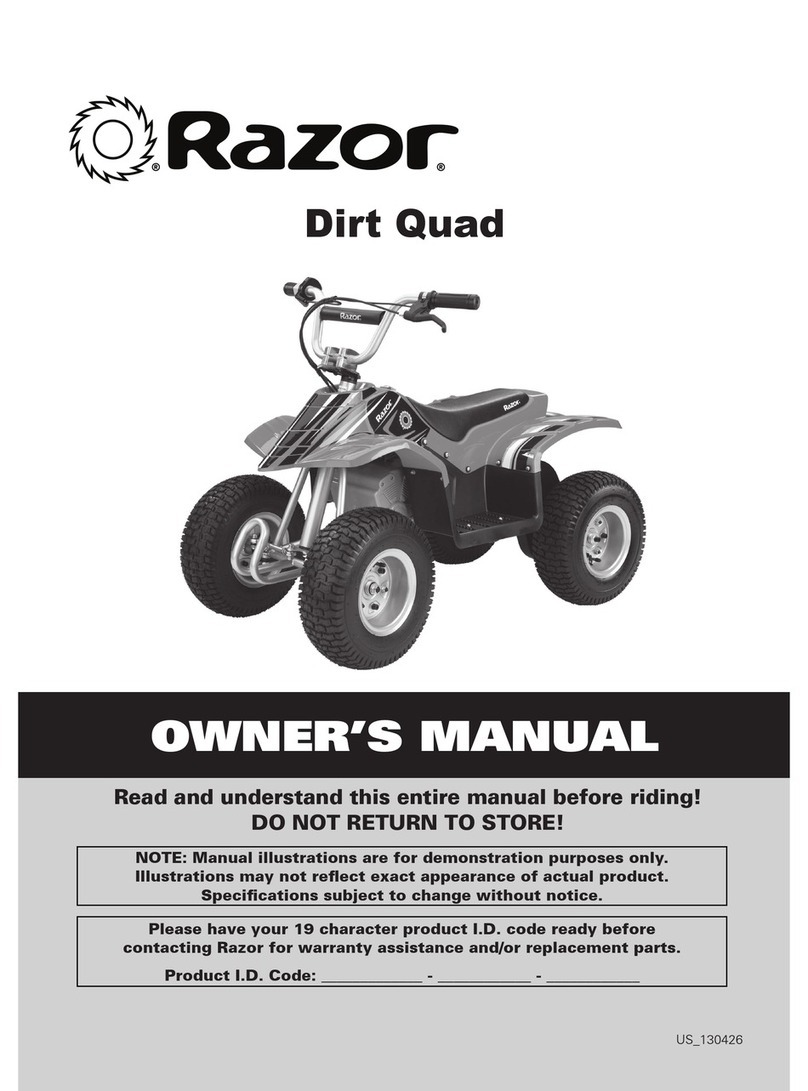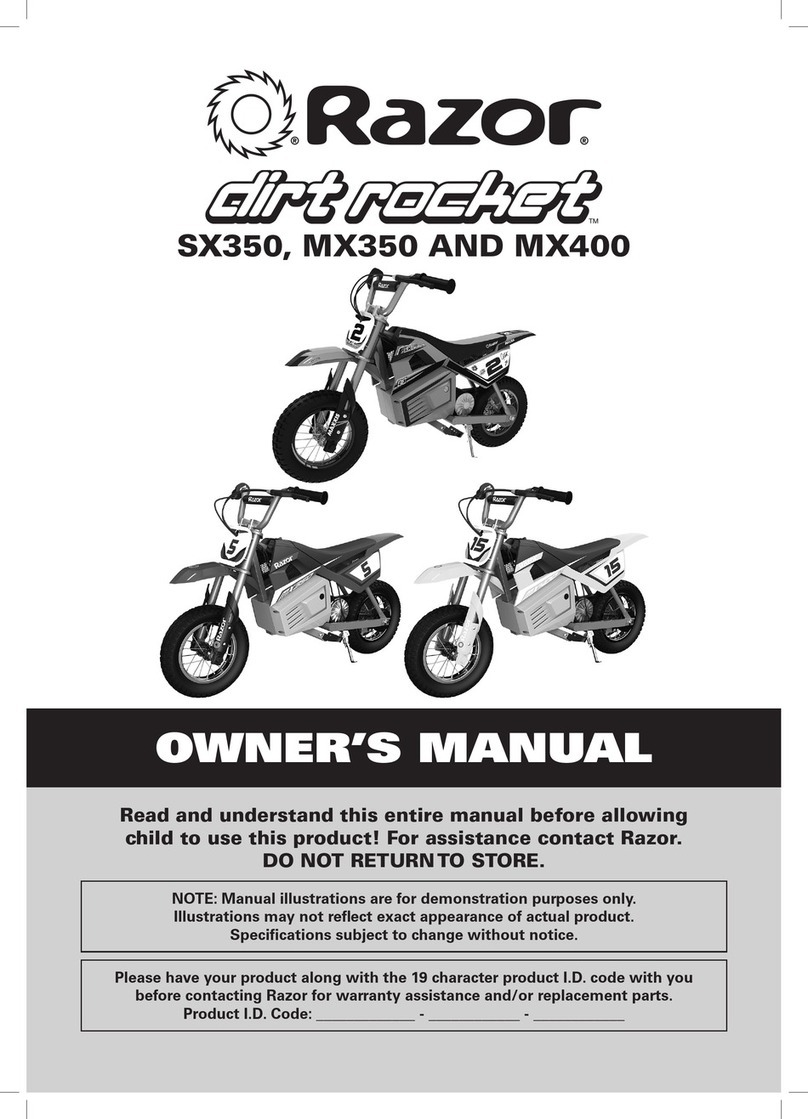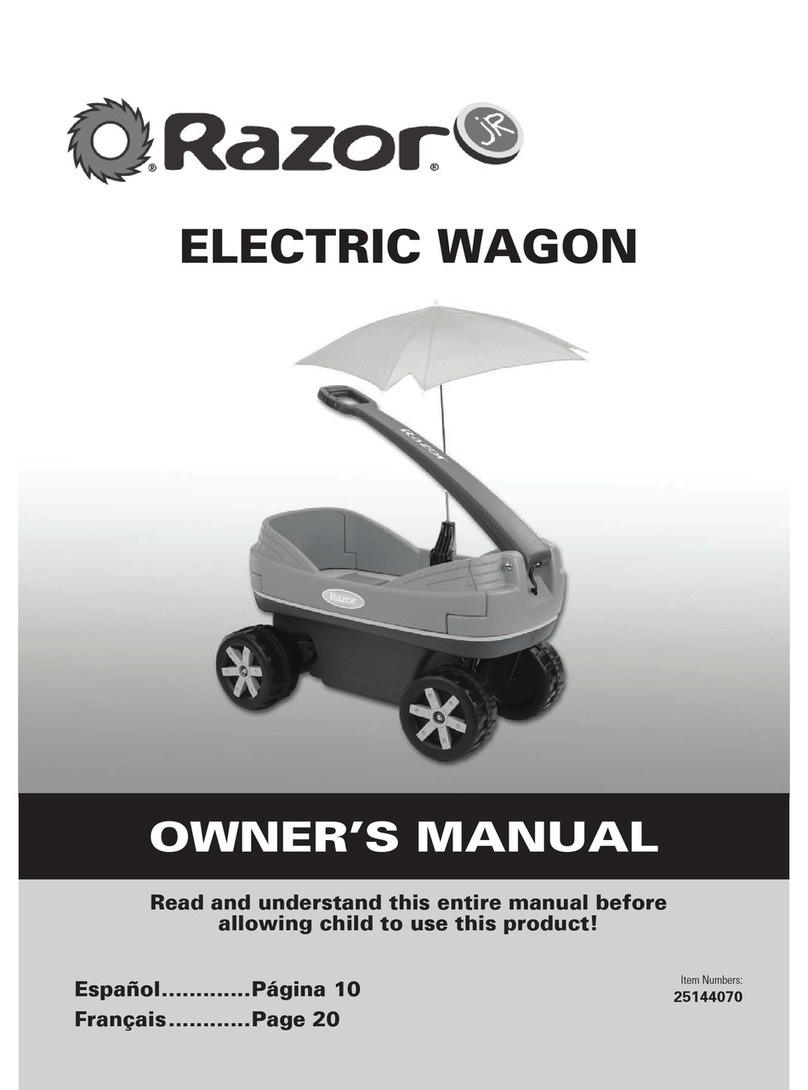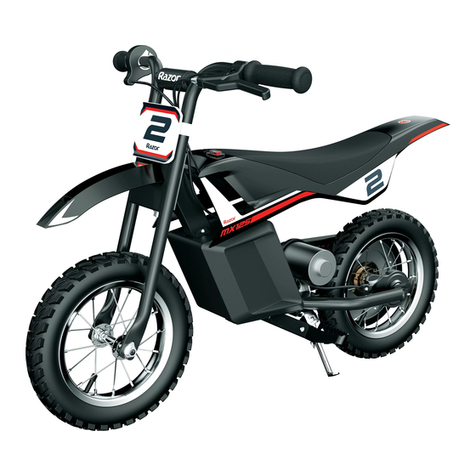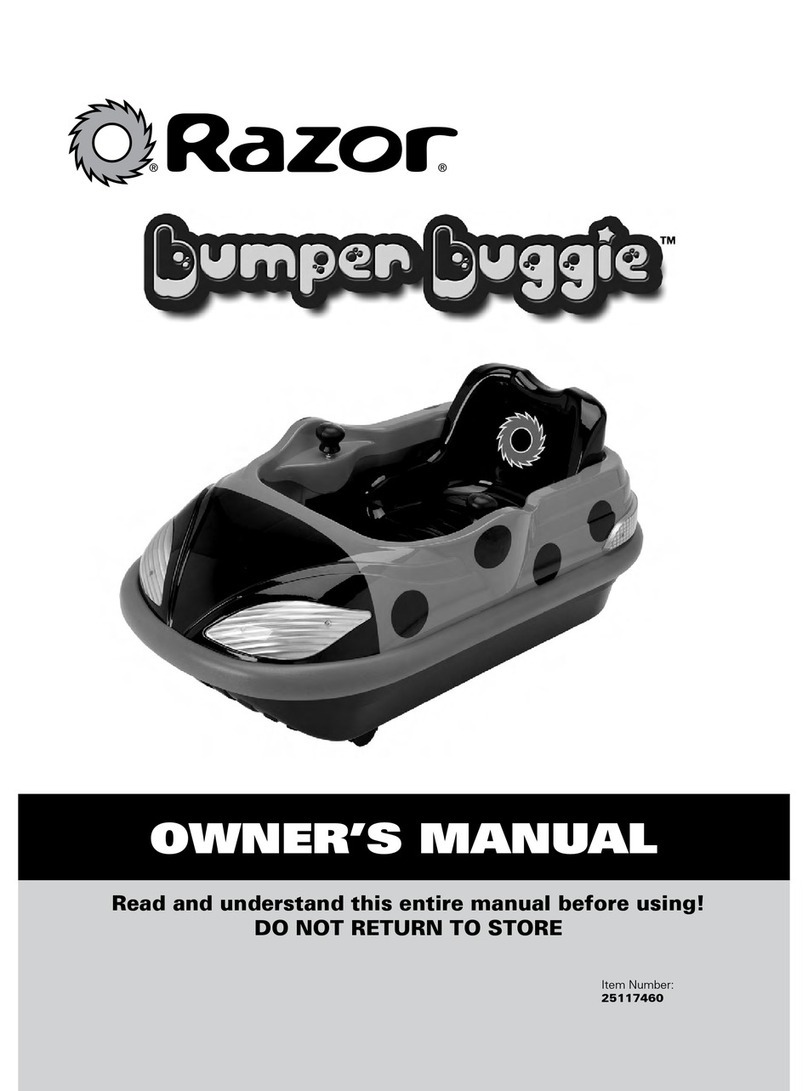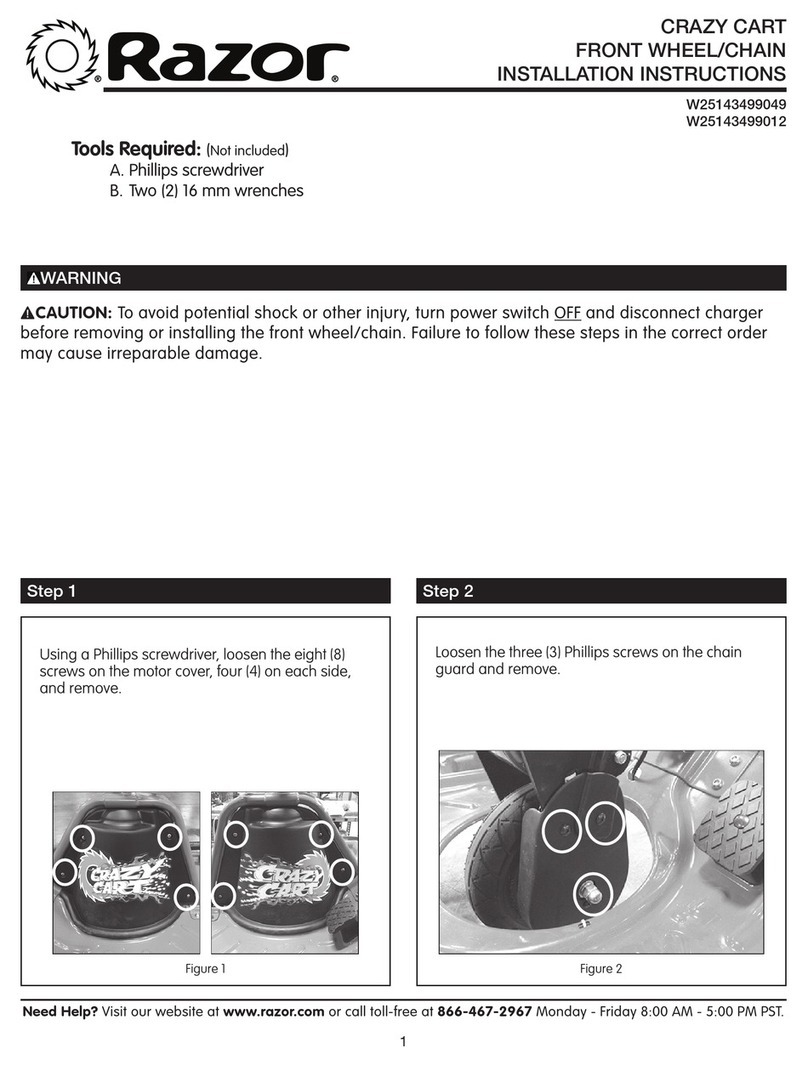NOTE:
This manual contains many “Warnings” and “Cautions” concerning the consequences of failing to
maintain, inspect or properly use your Pocket Rocket. Because any incident can result in serious injury or even death,
we do not repeat the warning of possible serious injury or death each time such a warning is mentioned.
AN IMPORTANT MESSAGE TO RIDERS AND PARENTS:
READ THIS ENTIRE MANUAL BEFORE
OPERATING OR ALLOWING USE OF THE POCKET ROCKET, AND KEEP THIS MANUAL AVAILABLE FOR FUTURE
REFERENCE.This manual contains important safety information. For safety, it is your responsibility to review this
information and make sure that all riders understand all warnings, cautions, instructions and safety topics and assure
that young riders are capable and able to safely and responsibly use this product. Razor USA recommends that you
periodically review and reinforce the information in this manual with younger riders, and you are required to inspect and
maintain your child’s vehicle to insure their safety.
The recommended rider age is only an estimate, and can always be effected based upon a particular rider’s size,
weight or skills. If the rider is unable to fit comfortably on the Pocket Rocket, don’t attempt to ride it.
Keep this product away from small children and always understand that this product is intended for use only by
persons who are, at a minimum, completely comfortable and competent riding a bicycle without training wheels.
GENERAL WARNING: Riding the Pocket Rocket can be a hazardous activity. Electric vehicles can, and are
intended to, move and it is therefore possible to get into dangerous situations and/or lose control and/or fall off. If such
things occur you can be seriously injured or die. LIKE ANY OTHER MOVING PRODUCT,USING THE POCKET
ROCKET CAN BE A DANGEROUS ACTIVITY AND MAY RESULT IN INJURY OR DEATH EVEN WHEN USED WITH
SAFETY EQUIPMENT AND OTHER PRECAUTIONS. USE AT YOUR OWN RISK AND USE COMMON SENSE.
• Always check and obey any local laws or regulations which may affect the locations where the Pocket Rocket may be
used on public property. The Pocket Rocket is meant to be used only in controlled environments free of potential
traffic hazards, and not on public streets or sidewalks. Do not try to ride your Pocket Rocket on public streets or in
any areas where pedestrian or vehicle traffic may present a risk of collision or injury to yourself or others. Watch out
for potential obstacles including pedestrians, skaters, skateboards, bikes, children or animals who may enter your
path, and respect the rights and property of others.
• Do not ride the Pocket Rocket in wet weather and never immerse the Pocket Rocket in water, as the electrical and
drive components of the Pocket Rocket could be damaged by water or create other possibly unsafe
conditions.
• The Pocket Rocket is designed to perform best outdoors on solid flat, clean and dry surfaces. Wet, slick or uneven and
rough surfaces may impair traction and contribute to possible accidents. Use only on flat, dry, level ground without
loose debris, such as rocks or gravel. Do not ride a Pocket Rocket in mud, ice, puddles or water. Avoid excessive
speeds that can be associated with downhill rides. Never risk damaging indoor surfaces such as carpet or flooring by
use of a Pocket Rocket indoors.
Table of Contents
1. Key Parts of the Pocket Rocket . . . . . . . . . . . . . . . . . . . . . . . . . . . . . . . . . . . . . . . . . . . . . . . . . . . . . . . . . . .3
2. Preparing for First-Time Use
2A. Un-box . . . . . . . . . . . . . . . . . . . . . . . . . . . . . . . . . . . . . . . . . . . . . . . . . . . . . . . . . . . . . . .4
2B. Handlebars . . . . . . . . . . . . . . . . . . . . . . . . . . . . . . . . . . . . . . . . . . . . . . . . . . . . . . . . . . . .4
2C. Attach the fairing . . . . . . . . . . . . . . . . . . . . . . . . . . . . . . . . . . . . . . . . . . . . . . . . . . . . . . .5
2D. Inflating the tires . . . . . . . . . . . . . . . . . . . . . . . . . . . . . . . . . . . . . . . . . . . . . . . . . . . . . . . .6
2E. The brake . . . . . . . . . . . . . . . . . . . . . . . . . . . . . . . . . . . . . . . . . . . . . . . . . . . . . . . . . . . . .7
2F. Charging prior to use . . . . . . . . . . . . . . . . . . . . . . . . . . . . . . . . . . . . . . . . . . . . . . . . . . . .8
2G. Circuit breaker . . . . . . . . . . . . . . . . . . . . . . . . . . . . . . . . . . . . . . . . . . . . . . . . . . . . . . . . . 9
3. Safety Check Before Riding . . . . . . . . . . . . . . . . . . . . . . . . . . . . . . . . . . . . . . . . . . . . . . . . . . . . . . . . . . . . .9
4. Maintenance and Repairs . . . . . . . . . . . . . . . . . . . . . . . . . . . . . . . . . . . . . . . . . . . . . . . . . . . . . . . . . . . . . .10
5. Safety . . . . . . . . . . . . . . . . . . . . . . . . . . . . . . . . . . . . . . . . . . . . . . . . . . . . . . . . . . . . . . . . . . . . . . . . . .15
6. Illustrated Parts Breakdown . . . . . . . . . . . . . . . . . . . . . . . . . . . . . . . . . . . . . . . . . . . . . . . . . . . . . . . . . . . .16
7. Limited Warranty and Owner Registration . . . . . . . . . . . . . . . . . . . . . . . . . . . . . . . . . . . . . . . . . . . . . . . . .19
